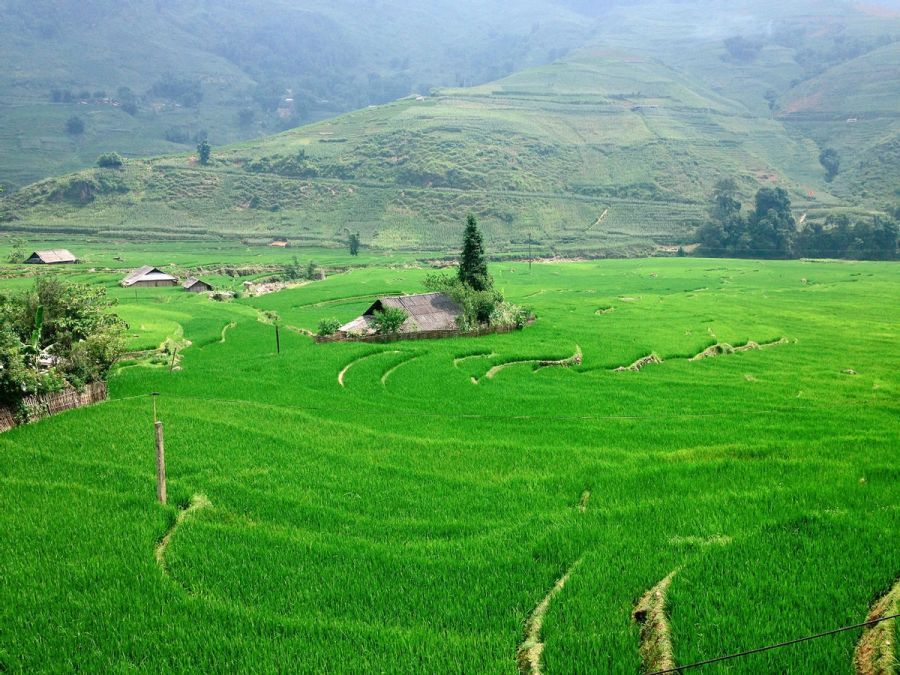Sapa Food Guide: 12 Local Dishes Worth Traveling For
Sapa’s unique food shows the inviting flavors of the mountains with fresh products and old methods. Following this guide, every traveler can try true local dishes to discover the real culture of the misty hills.
Table of Contents
ToggleThang Co (Horse Meat Stew)
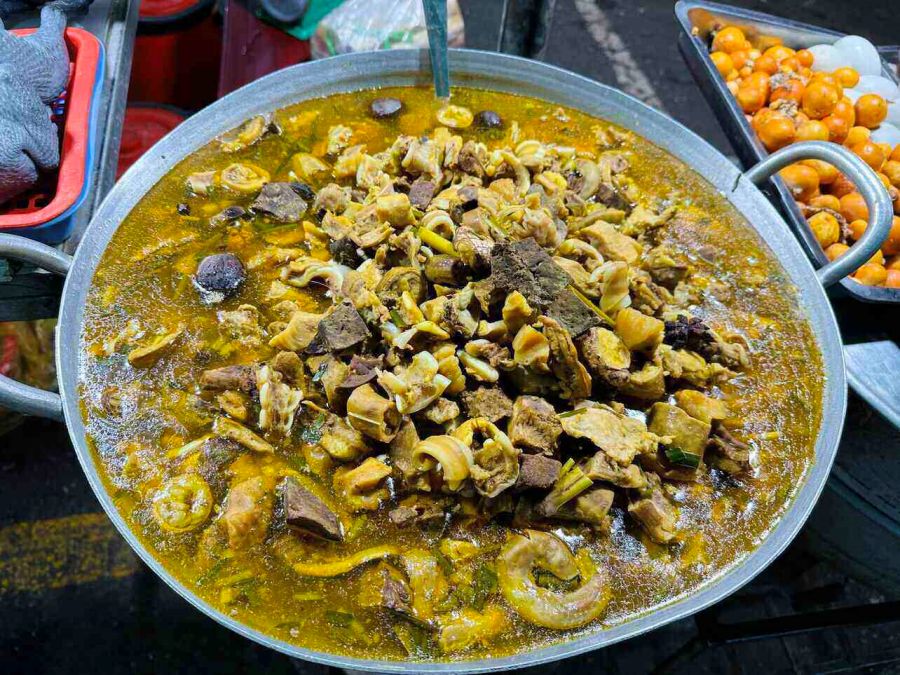
Among all the food in Sapa, thang co stands out as a true cultural symbol. Originating from the H’Mong people, this dish brings together horse meat, bones, organs, and over twenty highland herbs in a pot that simmers for hours. The result is a bold, slightly gamey broth that’s warming and full of character.
You’ll find the most authentic bowls in open-air markets like Sapa Love Market or Bac Ha Fair. It has a unique flavor, but not for everyone, especially if you’re not familiar with dishes made from organ meat. You will often find that many restaurants now serve tamer versions by using beef or pork with the same style and flavor as the original ones.
Traveler Tip: Eating thang co from local markets at lunch will give you a chance to enjoy the most delicious broth. Pair it with a shot of táo mèo wine and sit among locals, and you’ll feel the soul of Sapa food come alive.
Lon Cap Nach (Grilled Free-Range Pork)
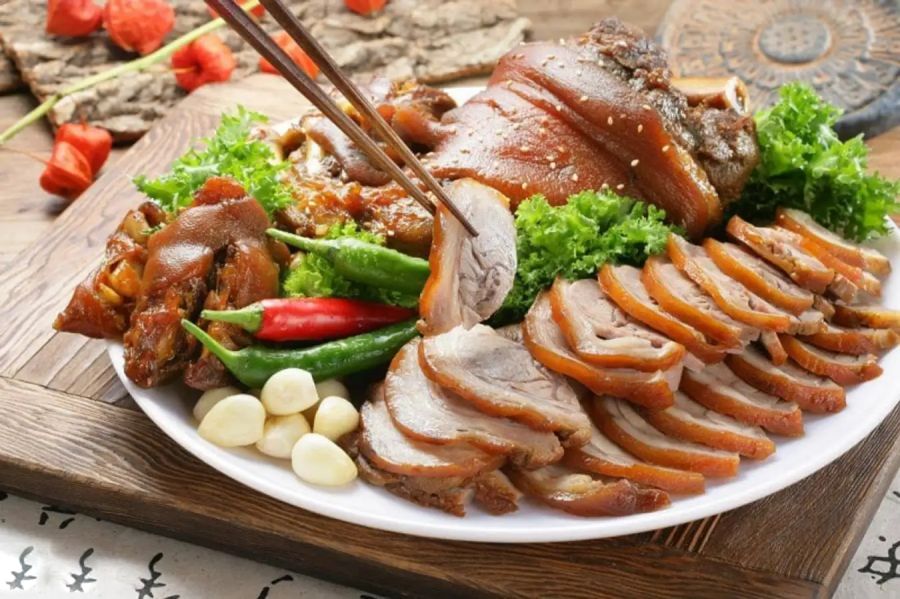
Lon cap nach is one of the best foods in Sapa, thanks to its rustic flavor and simple preparation. A favorite Sapa food, this hill tribe pork comes from small pigs raised in the hills by ethnic families. Their natural diet and active lifestyle give the meat a firm texture and unique taste.
After being marinated with herbs and salt, the pork is roasted until the skin turns crisp and the meat stays tender. Chili salt and pickles are usually served with it at markets or when people gather in the village. Because of its smoky and savory taste, the dish is easy to enjoy.
Traveler Tip: You can order great lon cap nach from the stalls at typical rural grills near Ta Phin and other towns in Sapa. Look for places with a steady crowd of locals; that’s usually the best sign the pork is freshly grilled and worth the wait.
Lau Ca Hoi (Salmon Hotpot)
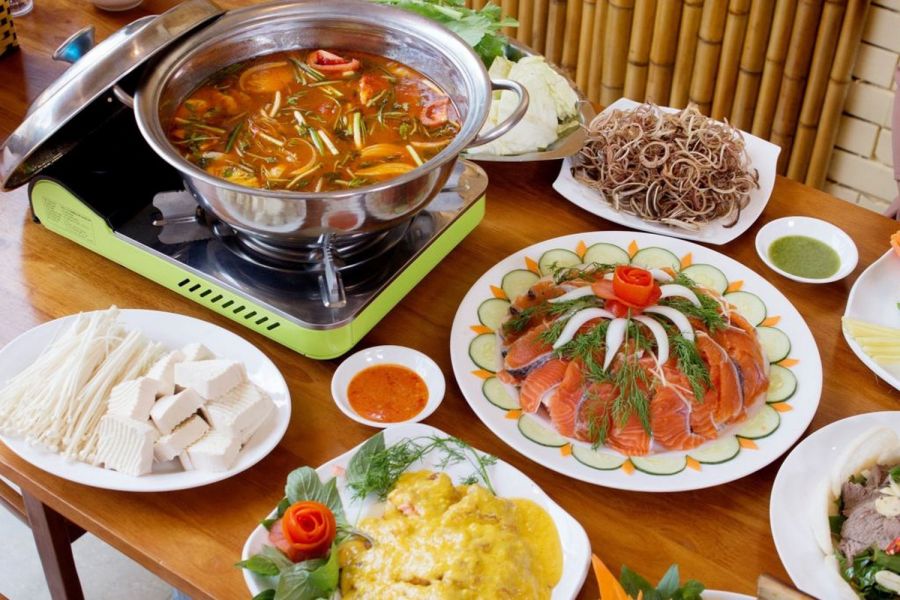
Among the best Sapa foods for cold nights, lau ca hoi is both nourishing and full of local flavor. Lau ca hoi takes this fresh, highland-raised fish and turns it into something both comforting and vibrant. The broth is built from tomatoes, pickled bamboo shoots, lemongrass, and mountain herbs, giving it a slightly sour, aromatic base that warms you from the inside out.
Chunks of firm pink salmon are added just before serving, along with vegetables, mushrooms, and tofu. The fish stays tender while soaking up the broth’s sharp and fragrant flavor. It’s a favorite among locals during cold evenings and a memorable experience for travelers seeking something nourishing after a long day outside.
Traveler Tip: Order lau ca hoi at local restaurants like Cho Tinh Quan or Hotpot Center. Ask for wild vegetables and rice noodles on the side to enjoy them the way locals do.
Ca Suoi Nuong (Grilled Stream Fish)
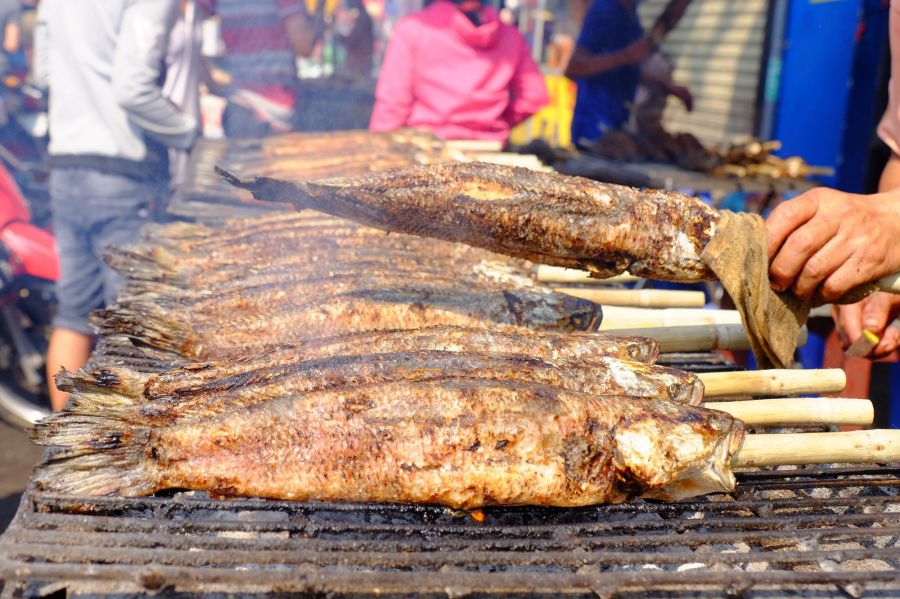
Sapa’s mountain streams are rainy, the water is very cold, and it moves fast, so they provide an excellent environment for local fish to grow. It is because of this natural gift that ca suoi nuong stands out as a delicious example of Sapa food. First, the cleaned fish is seasoned with salt, lemongrass, and a bit of mac khen (a local pepper with a tangy, citrusy flavor), then it is grilled with its skin still on until it crisps and the meat separates smoothly.
There’s no fancy plating or sauces, just perfectly grilled fish served with sticky rice and a dipping mix of salt, chili, and lime. The taste is delicate and fresh, with a light smokiness that reflects how close the dish stays to nature. It’s simple, but incredibly satisfying, especially after a day spent trekking through the hills.
Traveler Tip: Try ca suoi nuong at Sapa’s night market or from roadside vendors near the Stone Church. It’s best when grilled on the spot and eaten hot, with your fingers and a pinch of salt.
Thit Trau Gac Bep (Smoked Buffalo Meat)
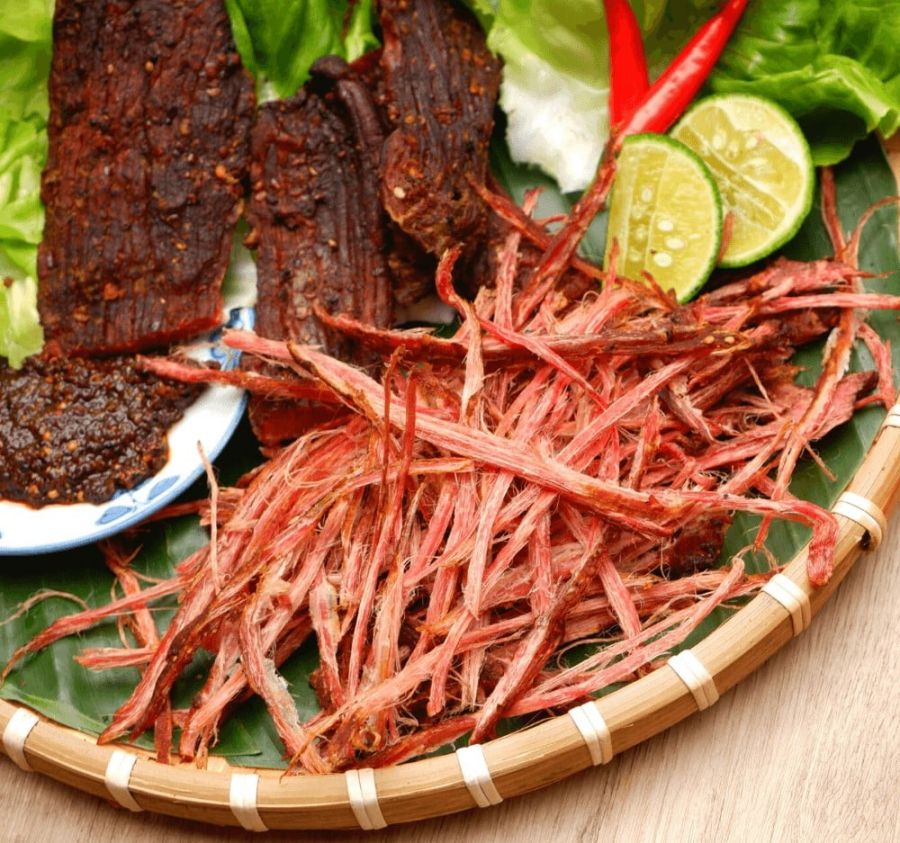
Smoking buffalo meat, known as thit trau gac bep, is a well-known dish among the Black Thai people and one of the distinctive types of Sapa food. Before hanging it on the kitchen roof, the choice meat is rubbed with salt, ginger, and mac khen to get seasoned.
The slices end up dark, chewy, and have a strong earthy smell, as well as a strong savory taste. People in the area usually tear thit trau with their hands and dip them in a simple sauce made from chili and lime. Even though the texture seems stiff at first, you’ll notice the taste growing in each bite and staying with you for a while.
Traveler Tip: Sapa food local markets sell vacuum-packed thit trau gac bep, so you can easily get some or bring some home as a gift. Pick meat that gives off a tasty smoky smell and has very little visible fat for the greatest taste.
Com Lam (Bamboo Sticky Rice)
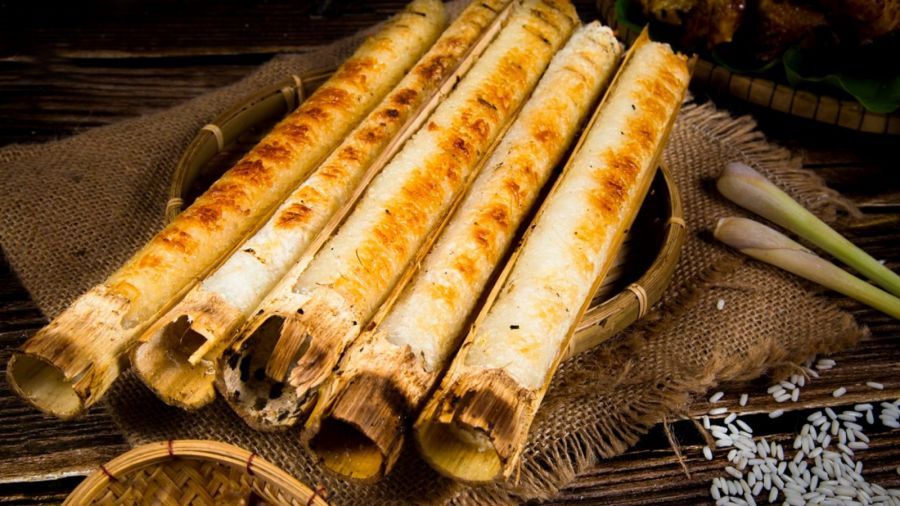
The simple dish of com lam is enjoyed everywhere in Sapa and the highlands. A bit of salt is added to sticky rice, then packed into bamboo tubes and slowly grilled over charcoal for a light smoky taste. The bamboo acts as a way to cook rice and adds a special aroma.
Grilled pork, stream fish, and sesame salt are often served with it, making it a popular side for trekkers and vendors alike. Its simplicity shows how creative highland cuisine can be. This dish is a classic part of Sapa food that travelers love to try.
Traveler Tip: Trekking travelers may find com lam around trekking trails and at the beginning of most villages. It makes a convenient snack to carry during day trips, compact, filling, and easy to eat without utensils.
Men Men (Steamed Cornmeal)
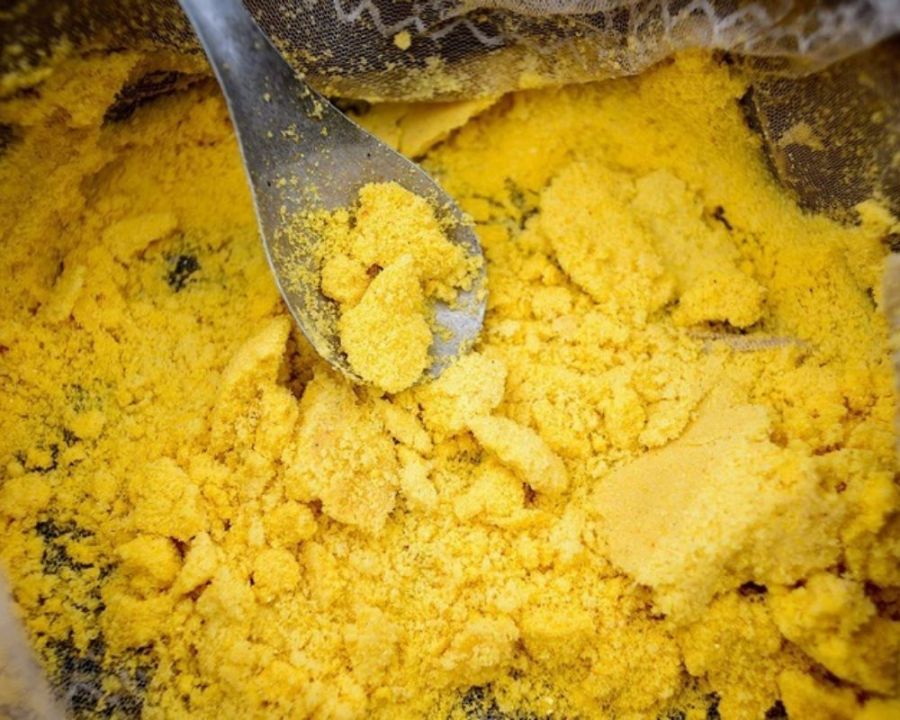
Men men is a staple of the H’Mong people, made from dried corn ground into fine meal and steamed in layers. Unlike soft porridge, the texture is slightly coarse and crumbly, yet fragrant and gently sweet. It’s usually served with broth, stir-fried greens, or grilled meat, making it more of a base than a standalone dish.
In Sapa’s colder, higher areas where rice is harder to grow, corn plays an essential role in daily life. Men men reflects both the local landscape and the frugality of highland cuisine—simple, nourishing, and filling. It may not have the bold flavors of grilled meats or hotpot, but it leaves a quiet impression in the world of Sapa food.
Traveler Tip: Men men is best enjoyed at local family-run eateries rather than tourist spots. Ask for a side of vegetable soup or fried egg to balance out its dry texture.
Xoi Ngu Sac (Five-Colored Sticky Rice)
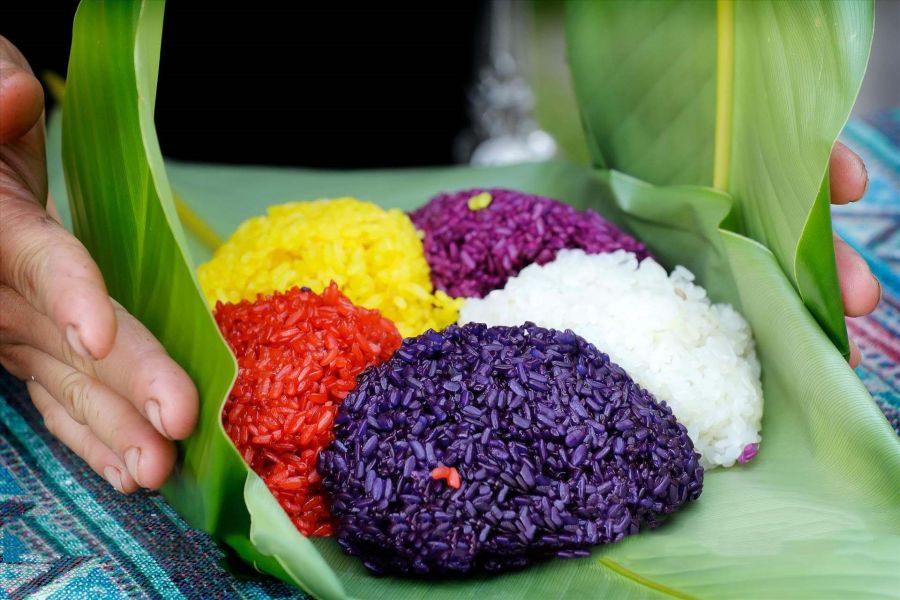
People often notice this dish because it looks spectacular. Rice is dyed with red gac fruit, purple magenta leaves, yellow turmeric, and green pandan and steamed in one dish to come up with a colorful and aromatic snack.
Because of its vivid colors, many people think it tastes sweet, but its taste is very mild. Tay and Nung groups usually cook the dish to celebrate important occasions. Every color is said to symbolize different dreams, for example, prosperity or peace.
Traveler Tip: Try xoi ngu sac during the mornings at the markets, most importantly when there is a special day in Vietnam. The dish becomes contrasting and tastier when vendors add mung bean paste or sesame salt to it.
Ga Den (Black Chicken)
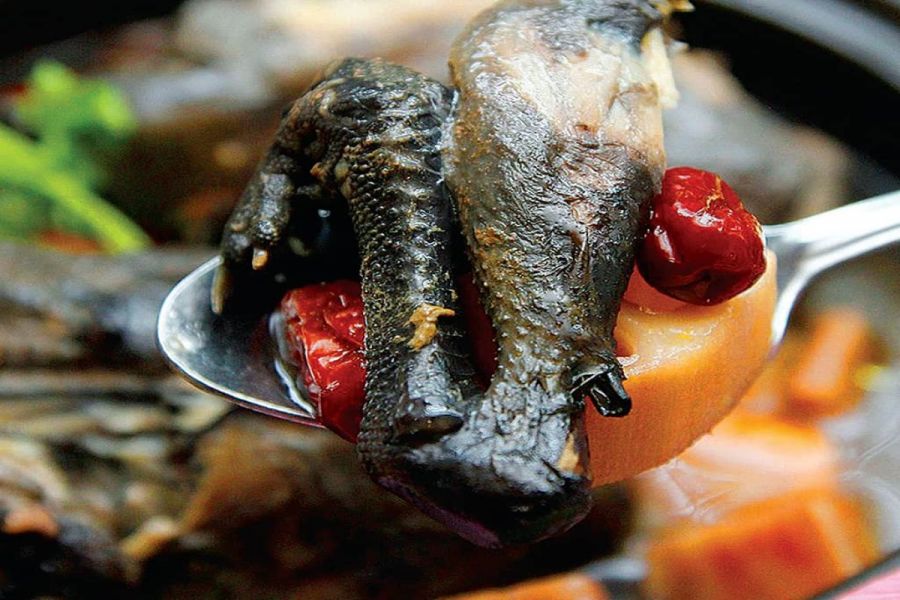
Ga den, also known as black H’Mong chicken, is a rare local breed raised in the mountains. Its skin is naturally dark, but the meat is firm, sweet, and rich in nutrients. Most people simmer it with herbs and bones, creating a gentle, aromatic broth believed to boost energy and circulation.
People often consider it food as well as medicine, mainly when the weather turns colder. It’s very light in taste compared to some mountain stews, and goes well with sticky rice as well as cooked forest plants. Sometimes it’s grilled, but the herbal soup is what defines the dish.
Traveler Tip: Herbal black chicken soup is best tried at small traditional restaurants, such as the ones you’ll find in Cat Cat or Ta Van villages. It’s a good choice for colder days when you need something warm but not too heavy.
Con Sui (Dry Pho With Sauce)
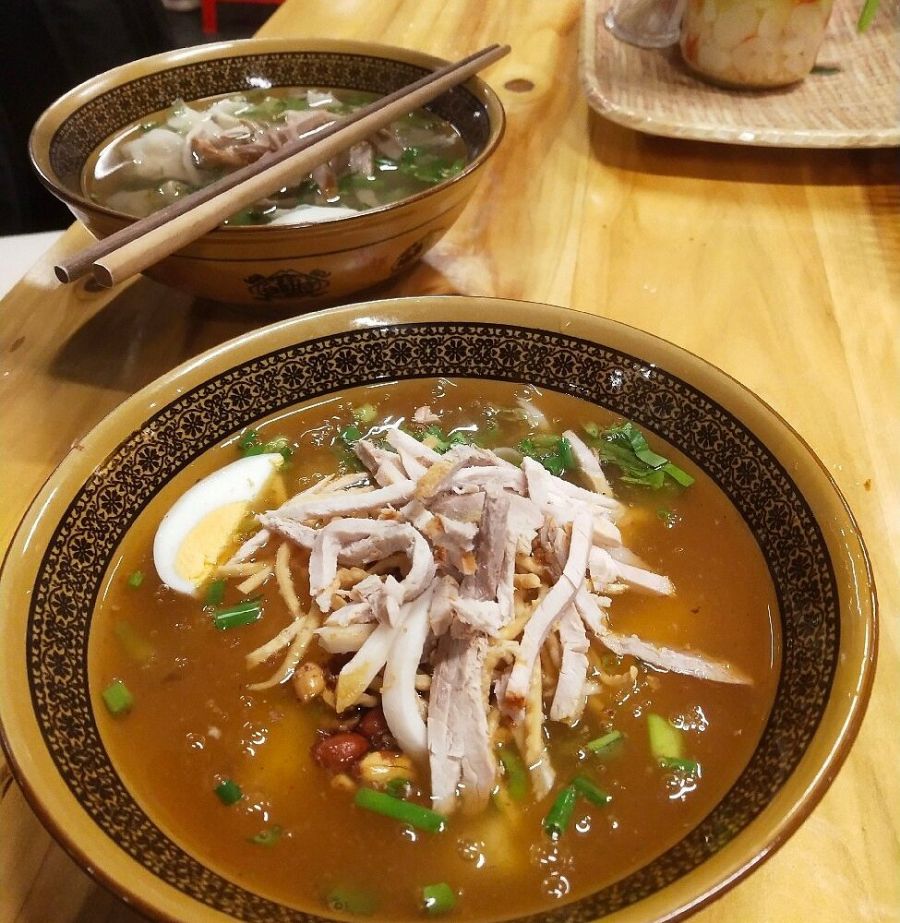
Though it’s known as pho but pho con sui is closer in style to dry noodles. The dish is made with rice noodles, beef or pork sautéed together with fresh herbs and peanuts, some crispy shallots, and a thick, rich sauce. The sauce is not too thin or watery — a texture that surprises many first-timers exploring what to eat in Sapa beyond the usual noodle soups.
Local people tend to have con sui for either breakfast or lunch, when they need a lighter meal than usual. The flavor is layered: nutty, garlicky, and a little sweet. Some versions have fried sweet potato or egg to enhance the texture and produce a colorful meal.
Traveler Tip: If you visit small places during breakfast in Sapa center, ask for con sui instead of pho. It’s quick, affordable, and offers a satisfying local twist on a national classic.
Ruou Tao Meo (Fermented Wild Apple Wine)
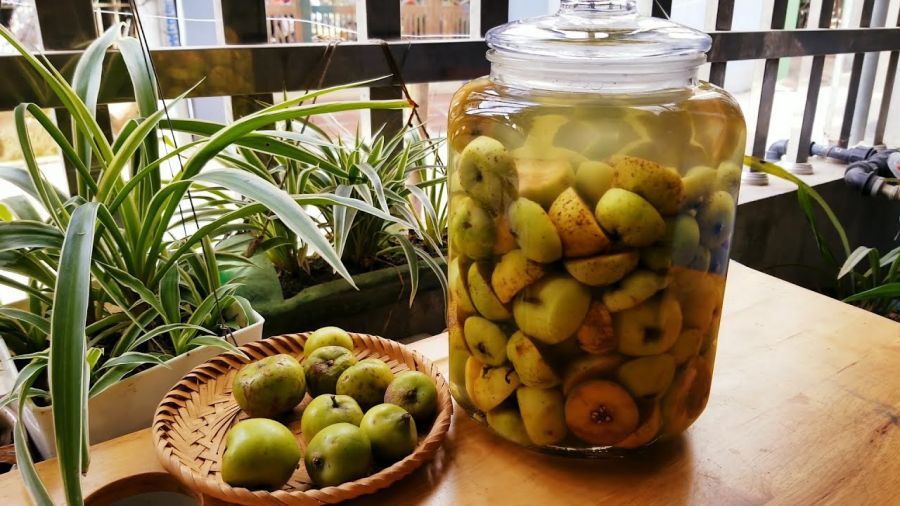
The wine is created using wild apples (tao meo) gathered from the Hoang Lien Son slopes when autumn comes. After going through the slicing and aging process for months, the fruit gives off a sweet, subtle flavor with time. The final result is a reddish-golden wine that’s sweet on the nose but strong on the tongue.
Ruou tao meo is served to guests as a sign of warmth and trust. It pairs with grilled dishes like smoked buffalo or mountain sausage, especially at long communal meals in colder months. Each household may have its recipe, so the flavor can vary widely. Tasting tao meo wine is an authentic Sapa food experience, revealing the region’s culinary heritage.
Traveler Tip: Look for homemade versions sold at markets or roadside stalls. Choose bottles with visible slices of fruit inside, and ask how long they’ve been aged for a smoother, deeper flavor.
Banh Hat De/Hat De Nuong (Chestnut Cake & Roasted Chestnuts)
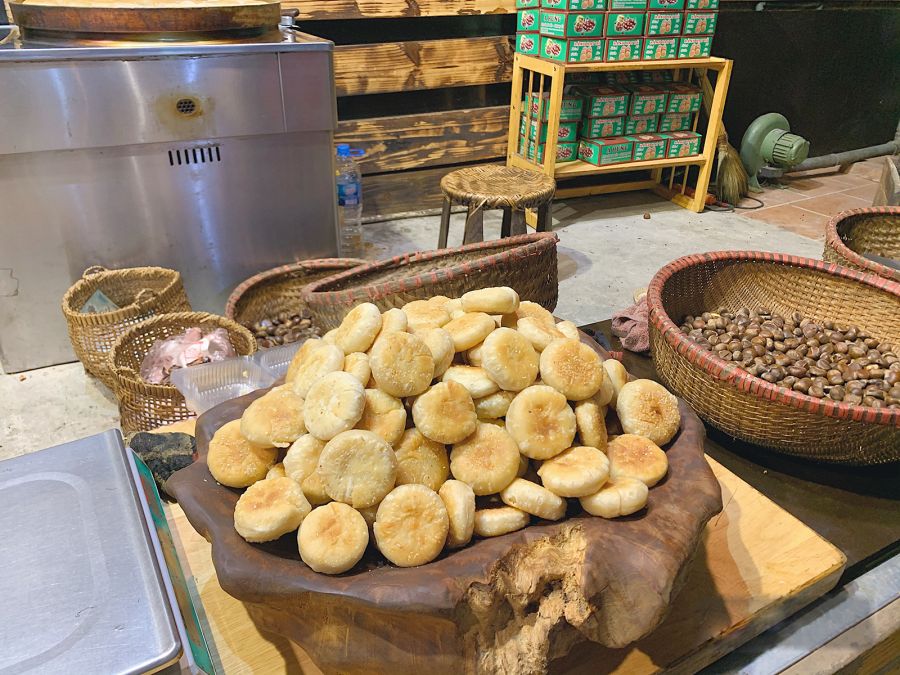
The streets of Sapa town fill with the smell of roasted chestnuts during the chilly winter times. Chestnuts are roasted over open flames or sprinkled inside cakes with a mild nutty taste and touch of sweetness. Chestnuts by themselves are simple and tasty, but the chestnut cake includes sticky rice flour and a pinch of sugar.
Even though they are simple and not fancy, these snacks have become staples of Sapa street food. You’ll often find vendors selling warm chestnuts wrapped in paper cones, especially in the evening near the night market or the Stone Church area. The texture is soft and crumbly, ideal for snacking as you explore.
Traveler Tip: Fresh chestnuts are most often found from late autumn up to early winter. Try this street food just after it is cooked, and feel the best essence of Sapa.
Conclusion
There’s no better way to understand Sapa food than by sitting down for a local meal. The food here is simple but full of care, shaped by weather, land, and tradition. Try some of the best food in Sapa, share a table, and you’ll start to see the place differently: quieter, deeper, and more familiar than you expected. And if you’re wondering where to begin, Seni World has a few ideas worth tasting.








